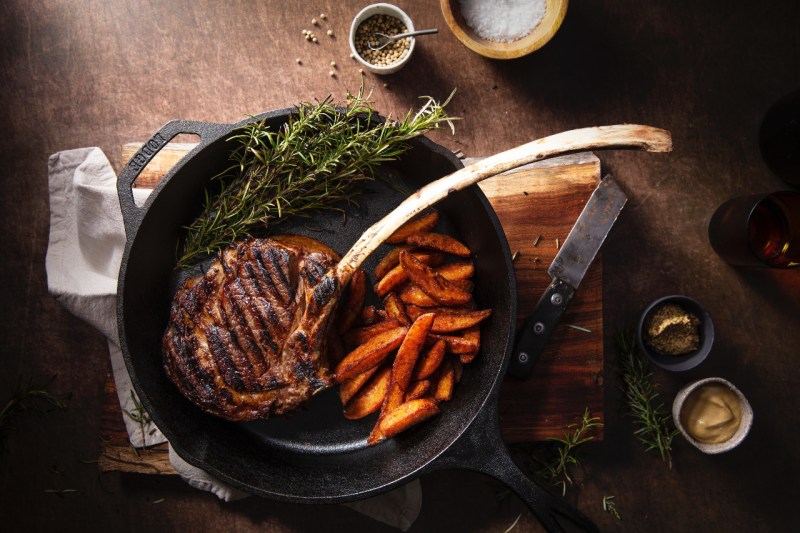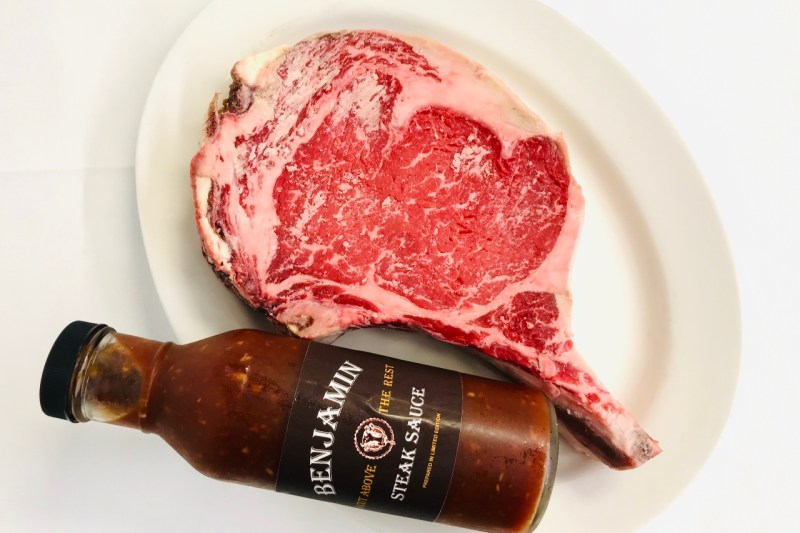
While a good steak is delicious by itself, sometimes a tasty sauce can take it to the next level. A classic steak condiment is a bottle of tangy, salty, and slightly sweet brown steak sauce. For most Americans, the first example that comes to mind is the iconic A1 Steak Sauce. There’s a time and a place for a steak sauce, especially if the sauce is balanced and made from quality ingredients. There is nothing like a homemade steak sauce or any homemade sauce for that matter.
What is Steak Sauce?
The steak sauce familiar to most Americans actually originated in England. Called a British brown sauce, it first appeared in the early 1800s and contained a combination of molasses, apples, tomatoes, dates, tamarind, vinegar, raisins, and various spices. The inclusion of these spices and fruits was purposeful in the 1800s — to mask the smell and taste of old beef. In Britain, people eat brown steak sauce not only for meat but also for breakfast and chips (fries). The most popular brands are HP, Daddie’s, Heinz Ideal, and Fletcher’s Tiger Sauce.
The famous A1 Steak Sauce is also British, created by Henderson William Brand, the personal chef for King George the IV from 1824 to 1831. Although British in origin, the sauce has not been available in the British market since the 1970s.
One of a Kind Benjamin’s Classic Steak Sauce

Although A1 has been steadily losing popularity over the years, not all steak sauces are created equal. For example, at Benjamin’s Steakhouse, they’ve created a custom steak sauce that’s carefully crafted to complement their steaks. Founded in 2006, Benjamin Steakhouse is a family-owned restaurant that prides itself on high-quality steaks and fantastic service. The restaurant has locations in New York state and Tokyo, Japan.
For the steak sauce at Benjamin Steakhouse, the idea was to find the right balance of flavors. Often, steak sauces can be too sweet with a sugar level that can overpower a cut of beef. At Benjamin’s, they use brown sugar instead of white sugar in their sauce, giving their condiment a very distinctive taste that isn’t too sweet. Benjamin’s Classic steak sauces are available for purchase on their site and can be shipped nationwide.
When to Use Steak Sauce
A point of contention for some steak purists is that steak sauces can overpower the meat. Like many classic steakhouses, Benjamin’s dry ages their steaks for about 28-32 days and cooks them in a high-heat broiler until the exterior is charred. Chef Arturo McLeod, executive chef & owner of Benjamin’s Steakhouse actually recommends their sauce for steaks since this intense, charred flavor goes quite well with a balanced, slightly tangy steak sauce. As a personal choice, he also likes to dip bread in the sauce as well.
While a steak sauce isn’t something you need to use for every steak, it has its moments. A delicate filet mignon isn’t the best choice with a brown steak sauce, since the sauce can easily overwhelm the meat. But what about a charred and fatty ribeye or a marinated flank steak? Some American steak recipes do call for marinades, with some of them featuring similar ingredients to the ones found in steak sauce. Also, other cuisines do use a flavored sauce with steak (Japan cooks wagyu beef in a sweet soy sauce for sukiyaki, a hot pot dish). Ultimately, the question a diner should be asking is what cut or seasonings would complement a steak sauce? For some tastes, a tangy, slightly sweet sauce can help cut some of the richness of fatty steak. But at the end of the day, it really comes down to individual tastes.



